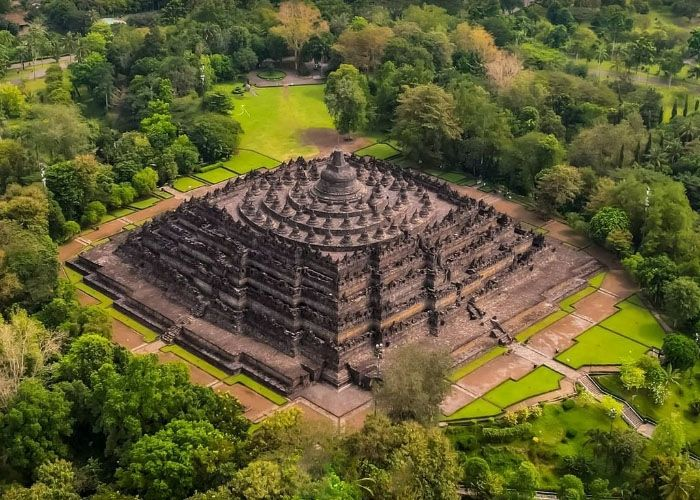innovuscollege – Candi Borobudur, located in Central Java, Indonesia, is one of the most significant Buddhist temples in the world and a UNESCO World Heritage Site. Built during the Syailendra Dynasty in the 8th and 9th centuries, this magnificent structure attracts millions of visitors each year, drawing attention for its intricate design, historical significance, and spiritual heritage.
Architectural Significance
Borobudur is renowned for its colossal stupa and its unique architectural style, which blends Indian influence with local elements. The temple is designed in the form of a mandala, symbolizing the universe in stone. Its three tiers represent the realms of desire, form, and formlessness, embodying Buddhist cosmology.
The structure consists of six square platforms topped by three circular platforms, adorned with 2,672 relief panels and 504 Buddha statues. The reliefs depict various scenes from Buddhist teachings, including the life of the Buddha and various Jataka tales, showcasing the temple’s role as both a spiritual and educational site.
Historical Context
Borobudur was built during a period when Buddhism flourished in Java, coinciding with the spread of the religion across Southeast Asia. However, by the 14th century, the temple was abandoned, likely due to the rise of Islam in the region. Over time, it became obscured by volcanic ash and jungle, remaining largely forgotten until its rediscovery in the 19th century.
Restoration Efforts
The temple underwent significant restoration efforts in the 20th century, particularly in the 1970s, when UNESCO, in collaboration with the Indonesian government, launched a massive restoration project. This endeavor aimed to preserve the temple’s structural integrity and historical significance, enabling it to withstand natural wear and tear as well as the effects of tourism.
Cultural Importance
Today, Borobudur is not only a tourist attraction but also a vital center for Buddhist pilgrimage. Each year, thousands of devotees gather at the temple, especially during Vesak, to celebrate the birth, enlightenment, and death of the Buddha. The site serves as a reminder of Indonesia’s rich cultural heritage and religious diversity.
Conclusion
Candi Borobudur stands as a testament to ancient engineering and spiritual devotion. Its breathtaking architecture, intricate carvings, and profound significance continue to inspire awe and reverence. As a UNESCO World Heritage Site, it not only preserves the legacy of Buddhism in Indonesia but also represents a vital piece of global cultural heritage, drawing visitors from around the world to experience its beauty and history.





